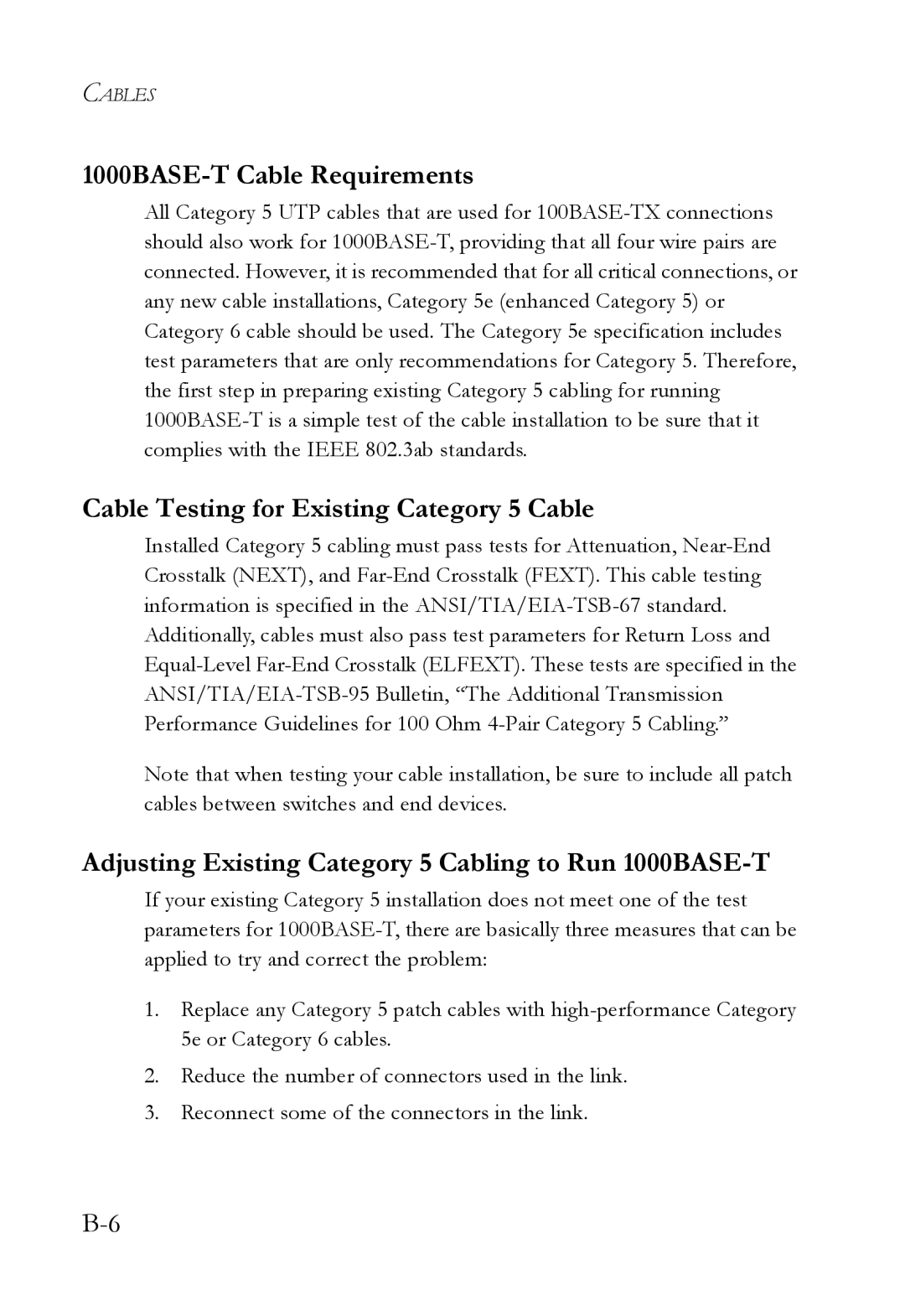CABLES
1000BASE-T Cable Requirements
All Category 5 UTP cables that are used for
Cable Testing for Existing Category 5 Cable
Installed Category 5 cabling must pass tests for Attenuation,
Additionally, cables must also pass test parameters for Return Loss and
Note that when testing your cable installation, be sure to include all patch cables between switches and end devices.
Adjusting Existing Category 5 Cabling to Run 1000BASE-T
If your existing Category 5 installation does not meet one of the test parameters for
1.Replace any Category 5 patch cables with
2.Reduce the number of connectors used in the link.
3.Reconnect some of the connectors in the link.
